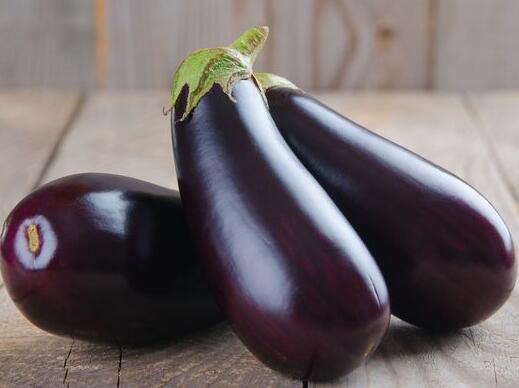
I follow these tips for picking a ripe one from the grocery store or the farmers market:
Check the color. There are several different colors of eggplant; the most common is the very dark purple, but some are lighter purple, striped or even yellow or white. Whatever the color, make sure the eggplant is all that color — there is no green, indicating unripeness. The skin should be shiny, too. Dull skin could mean the eggplant was picked a while ago and is no longer fresh.
Look for blemishes. Cuts and bruises mean that the eggplant may have started to rot inside.
Give it a little squeeze. The eggplant should have a little give to it, but it shouldn't be mushy. If you squeeze and it's hard, it was picked before it was fully ripe. Although unripe eggplants can ripen a bit after being harvested, it's difficult to coax them from unripe to ripe, so you want what you purchase to be close to this point already.
Consider their weight. An eggplant should feel a bit heavy, but there's no specific weight an eggplant should be. If it seems lighter than you think it should, it may have lost some of its water weight and is no longer fresh.
Once you find some, you can make this
My favorite way to cook eggplant is to lightly fry slices (sometimes I bread them, sometimes I don't), and then put some mozzarella cheese and some chopped up super ripe summer tomato on top of the slices and put them in the toaster oven until the cheese melts. I drizzle a little balsamic on top when they come out of the oven and voila a savory, summer appetizer or side dish.
I didn't know this until recently, but eggplants are classified as berries. Technically, they're a fruit, even though they're almost always treated as a vegetable.







